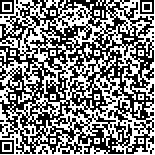| 引用本文: | 唐茂淞,张 楠,李国辉,等.基于机器学习算法的棉田土壤钾、钠离子量预测[J].灌溉排水学报,2023,42(9):32-39. |
| TANG Maosong,ZHANG Nan,LI Guohui,et al.基于机器学习算法的棉田土壤钾、钠离子量预测[J].灌溉排水学报,2023,42(9):32-39. |
|
| |
|
|
| 本文已被:浏览 973次 下载 2552次 |

码上扫一扫! |
|
|
| 基于机器学习算法的棉田土壤钾、钠离子量预测 |
|
唐茂淞,张 楠,李国辉,赵泽艺,李明发,王兴鹏
|
|
1.塔里木大学 水利与建筑工程学院,新疆 阿拉尔 843300;2.塔里木大学 现代农业工程
重点实验室,新疆 阿拉尔 843300;3.新疆生产建设兵团第一师水文水资源管理中心,
新疆 阿拉尔 843300;4.农业农村部西北绿洲节水农业重点实验室,新疆 石河子 832000
|
|
| 摘要: |
| 【目的】比较4种机器学习方法对南疆棉田土壤K+、Na+量的预测结果,确定一种预测准确度较高的机器学习模型作为可供参考的方法。【方法】采用支持向量回归(SVR)、随机森林回归(RFR)、K-最近邻回归(KNNR)和梯度提升回归树(GBRT)4种机器学习算法,2020年棉田土壤K+、Na+量数据训练模型,2021年实测数据进行测试验证。使用平均绝对误差(MAE)、均方根误差(RMSE)和决定系数(R2)对模型预测结果进行评估。【结果】4种模型(SVR、RFR、KNNR和GBRT)对测试样本K+量预测的MAE分别为0.100、0.169、0.169 g/kg和0.167 g/kg;RMSE分别为0.119、0.218、0.218 g/kg和0.223 g/kg;R2分别为0.687、0.437、0.430和0.395。对测试样本Na+量预测的MAE分别为0.841、2.841、2.826 g/kg和2.856 g/kg;RMSE分别为1.154、3.658、3.630 g/kg和3.650 g/kg;R2分别为0.838、0.299、0.219和0.200。将测试样本K+、Na+量分别按4个土层深度(0~10、10~20、20~30 cm和30~40 cm)进行预测时,SVR模型的误差值最小,其对K+量按照4个深度预测的MAE分别为0.122、0.114、0.056 g/kg和0.106 g/kg,RMSE分别为0.135、0.135、0.069 g/kg和0.126 g/kg;对Na+量预测的MAE分别为0.540、0.619、0.835 g/kg和1.371 g/kg,RMSE分别为0.636、0.748、1.198 g/kg和1.710 g/kg。【结论】SVR模型预测K+、Na+量的精度最高,可推荐作为南疆棉田土壤钾、钠离子量预测的一种方法。 |
| 关键词: 南疆棉田;土壤盐分离子;机器学习;回归预测模型 |
| DOI:10.13522/j.cnki.ggps.2022405 |
| 分类号: |
| 基金项目: |
|
| Predicting Soil K+ and Na+ Contents in Cotton Field Using Machine Learning Algorithm |
|
TANG Maosong, ZHANG Nan, LI Guohui, ZHAO Zeyi, LI Mingfa, WANG Xingpeng
|
|
1. College of Water Resource and Architecture Engineering, Tarim University, Alaer 843300, China;
2. Laboratory of Modern Agricultural Engineering, Tarim University, Alaer 843300, China;
3. Hydrology and Water Resources Management Center of the First Division of Xinjiang Production and Construction Corps,
Alaer 843300, China; 4. Key Laboratory of Northwest Oasis Water-saving Agriculture,
Ministry of Agriculture and Rural Affairs, PR China, Shihezi 832000, China
|
| Abstract: |
| 【Objective】The contents of K+ and Na+ in soil affect soil fertility and quality, and understanding their spatiotemporal changes and the factors influencing their changes is critical to improving soil management and alleviating soil alkalization. We propose a machine learning method to predict changes in K+ and Na+ content in soils.【Method】Taking data measured from a cotton field in Southern Xinjiang as an example, we compared four machine learning algorithms: support vector regression (SVR), random forest regression (RFR), K-nearest neighbor regression (KNNR), and gradient lifting regression tree (GBRT). All algorithms were first trained based on K+ and Na+ measured in 2020, and the trained models were then tested against the data measured in 2021. The accuracy and robustness of the models were evaluated using the mean absolute errors (MAE), root mean square error (RMSE), and the determination coefficient (R2).【Result】The MAE of SVR, RFR, KNNR and GBRT for predicting K+ content was 0.100, 0.169, 0.169 and 0.167 g/kg, respectively; their associated RMSE was 0.119, 0.218, 0.218 g/kg and 0.223 g/kg, respectively, and their R2 was 0.687, 0.437, 0.430, and 0.395, respectively. For predicting Na+ content, the MAE of SVR, RFR, KNNR and GBRT was 0.841, 2.841, 2.826 g/kg, and 2.856 g/kg, respectively; and their RMSE was 1.154, 3.658, 3.630 g/kg, and 3.650 g/kg, respectively, and R2 was 0.838, 0.299, 0.219, and 0.200, respectively. SVR model is most accurate for predicting soil K+ and Na+ in the depths of 0~10, 10~20, 20~30 and 30~40 cm, with its MAE for K+ at the four depths being 0.122, 0.114, 0.056 g/kg and 0.106 g/kg, respectively, and RMSE being 0.135, 0.135, 0.069 g/kg and 0.126 g/kg, respectively. The MAE of SVR for predicting Na+ at the four depths was 0.540, 0.619, 0.835 g/kg and 1.371 g/kg, respectively, and its RMSE was 0.636, 0.748, 1.198 g/kg and 1.710 g/kg, respectively.【Conclusion】Among the four algorithms we compared, SVR is most accurate for predicting soil K+ and Na+ at depth from 0 to 40 cm, and it can be used to predict variation in K+ and Na+ in response to environmental change in the cotton fields in Southern Xinjiang. |
| Key words: South Xinjiang cotton field; soil salt ions; machine learning; regression prediction model |
|
|
|
|